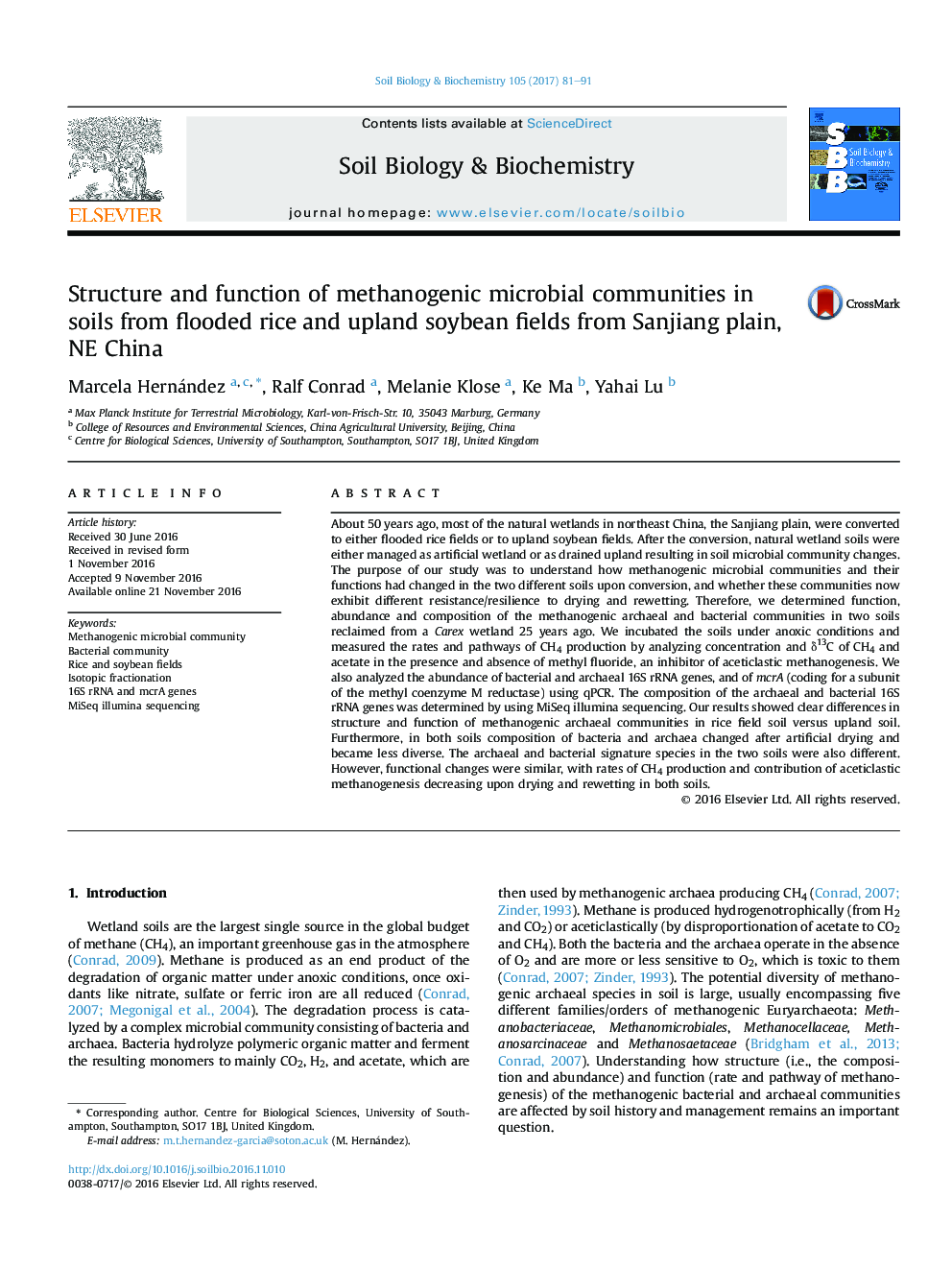| Article ID | Journal | Published Year | Pages | File Type |
|---|---|---|---|---|
| 5516505 | Soil Biology and Biochemistry | 2017 | 11 Pages |
â¢Microbial communities differed in rice and soybean soils derived from the same wetland.â¢Methanogenesis functioned similarly in the soils despite the community differences.â¢Microbial community structures responded differently to drying/rewetting.â¢In contrast, the response of methanogenesis to drying/rewetting was similar.
About 50 years ago, most of the natural wetlands in northeast China, the Sanjiang plain, were converted to either flooded rice fields or to upland soybean fields. After the conversion, natural wetland soils were either managed as artificial wetland or as drained upland resulting in soil microbial community changes. The purpose of our study was to understand how methanogenic microbial communities and their functions had changed in the two different soils upon conversion, and whether these communities now exhibit different resistance/resilience to drying and rewetting. Therefore, we determined function, abundance and composition of the methanogenic archaeal and bacterial communities in two soils reclaimed from a Carex wetland 25 years ago. We incubated the soils under anoxic conditions and measured the rates and pathways of CH4 production by analyzing concentration and δ13C of CH4 and acetate in the presence and absence of methyl fluoride, an inhibitor of aceticlastic methanogenesis. We also analyzed the abundance of bacterial and archaeal 16S rRNA genes, and of mcrA (coding for a subunit of the methyl coenzyme M reductase) using qPCR. The composition of the archaeal and bacterial 16S rRNA genes was determined by using MiSeq illumina sequencing. Our results showed clear differences in structure and function of methanogenic archaeal communities in rice field soil versus upland soil. Furthermore, in both soils composition of bacteria and archaea changed after artificial drying and became less diverse. The archaeal and bacterial signature species in the two soils were also different. However, functional changes were similar, with rates of CH4 production and contribution of aceticlastic methanogenesis decreasing upon drying and rewetting in both soils.
